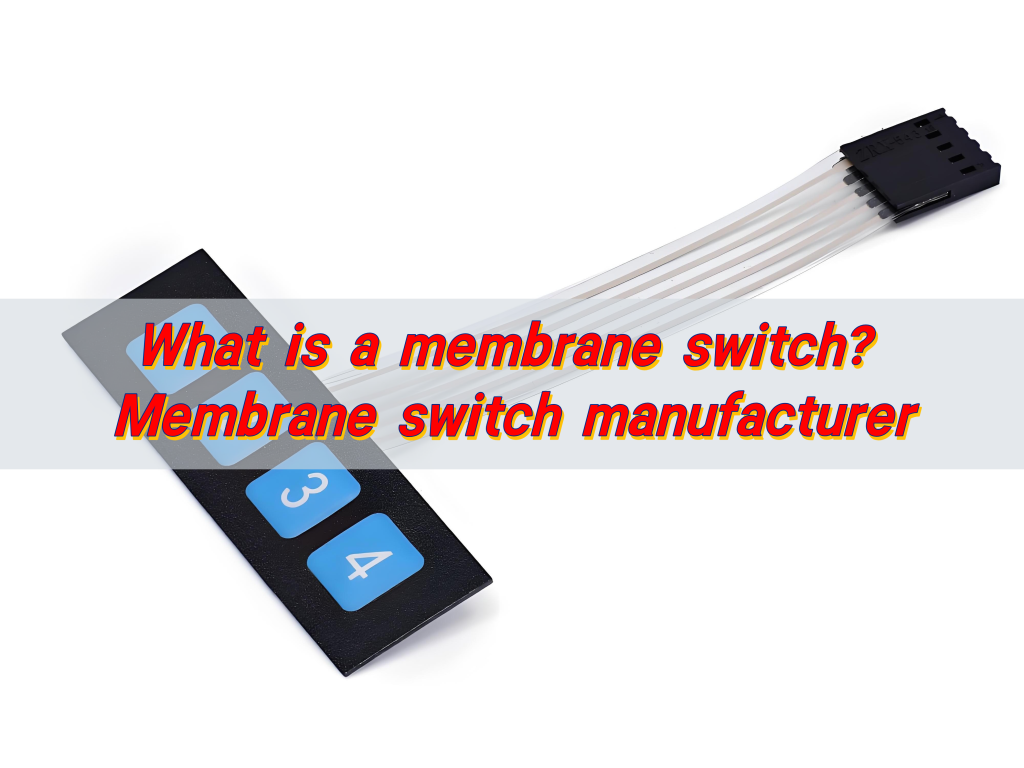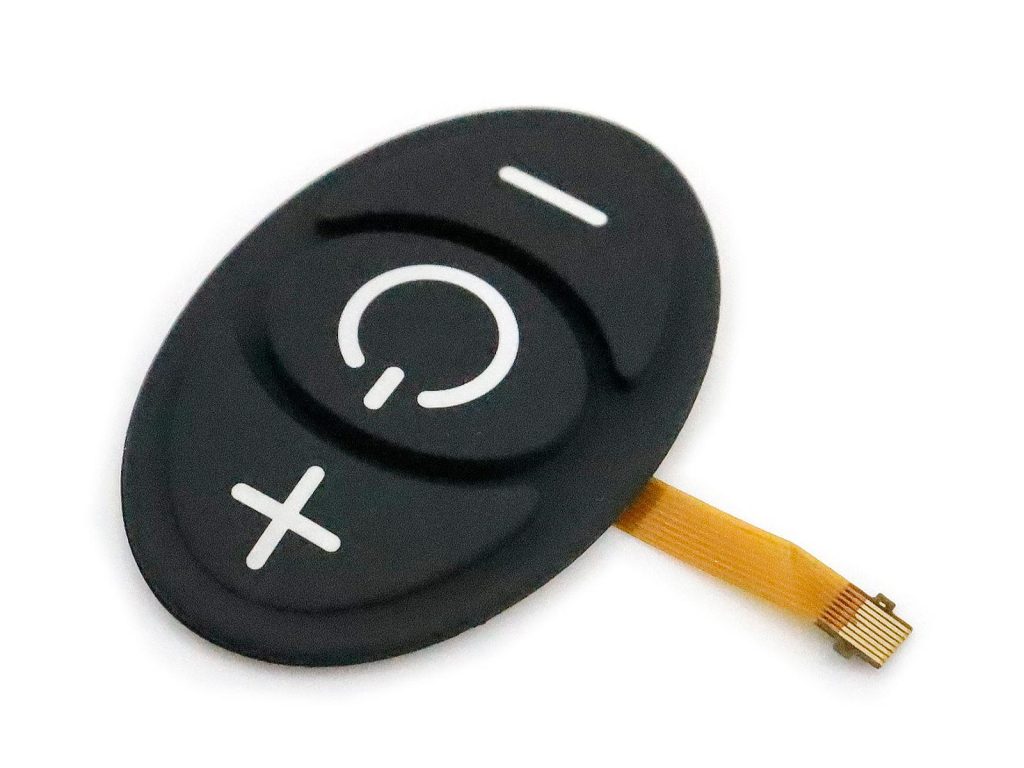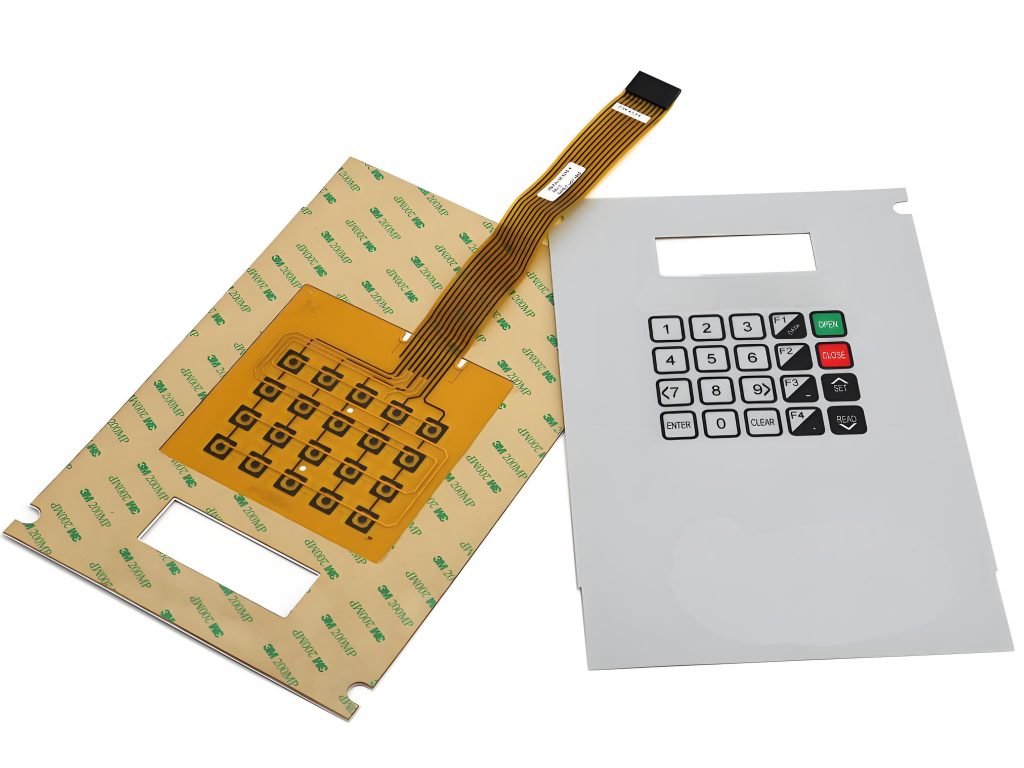
What is a membrane switch? Membrane switch manufacturer
What is a membrane switch? Membrane switch manufacturer
What is a membrane switch? Membrane switch is a thin, flexible, and sealed interface used in various devices for reliable and responsive control. It consists of multiple layers and is known for its durability, customization, and ease of cleaning.

What is a membrane switch?
Membrane switch is a user interface that activates an electrical circuit when pressed. It consists of several layers—usually a graphic overlay, spacer, circuit layer, and a back adhesive layer. These layers work together to create a responsive and durable switch. When pressure is applied to the top layer, it flexes down to complete the circuit below, sending a signal.
Because of its flat, sealed surface, a membrane switch resists dirt, moisture, and chemicals. This makes it ideal for harsh environments, cleanrooms, or places where hygiene matters.
And more importantly, it’s fully customizable. You can design it with logos, colors, textures, or even LED backlighting to enhance visibility and aesthetics. Some models include tactile feedback that gives a soft click when pressed, offering a more intuitive feel.
What is a membrane switch keyboard?
Membrane switch keyboard is a type of keyboard that uses membrane switches instead of mechanical keys. Unlike traditional keyboards with separate moving parts, all the keys on a membrane keyboard are part of a continuous, flexible surface.
This design has several advantages. First, it’s quieter. There’s no loud clacking sound, which is ideal for quiet environments like offices or hospitals. Second, it’s sealed against spills and dust. Third, it’s thinner and lighter than mechanical versions.

Although membrane switches vs mechanical keyboards is a common debate, many professionals prefer membrane keyboards for their clean design and long lifespan. While they may not give the same tactile feel as mechanical keys, they are often more affordable and more resistant to environmental factors.
What is a membrane panel switch?
Membrane panel switch is often part of a larger control panel or user interface. These panels are typically flat, easy to clean, and built to handle thousands—or even millions—of presses.
Membrane panel switches are custom-designed to match the device they control. You can include different button shapes, indicator windows, logos, or LED lighting. Many panels are made to be waterproof or resistant to UV exposure.
What makes membrane panel switches unique is their ability to combine functionality and visual design. This is why membrane switch custom solutions are so popular in product design today.
What is a membrane switch spacer?
The spacer layer is one of the most critical parts of a membrane switch. It keeps the upper and lower circuit layers separated until the button is pressed. When pressed, the upper layer makes contact with the lower, completing the circuit.
This layer not only determines the feel of the button press but also impacts the life cycle of the switch. A well-designed spacer ensures accurate actuation and prevents premature contact or bounce.

Spacers can be customized in thickness and layout, depending on the response time and tactile feel you want. Without a proper spacer, the whole system might fail or feel sluggish.
Are membrane switches good?
Membrane switches offer numerous advantages. They’re:
- Durable: Many switches last over 1 million cycles.
- Sealed: No dust, dirt, or moisture can get inside.
- Easy to clean: A simple wipe keeps the surface clean.
- Lightweight: Ideal for compact or portable devices.
- Affordable: Lower cost than mechanical assemblies.
- Customizable: You choose layout, color, material, and lighting.
For industries where reliability and simplicity matter, membrane switches outperform traditional options. They’re especially useful in environments with strict hygiene or harsh conditions. You’ll see them in medical devices, military tools, and kitchen appliances.
And with a membrane switch with LED, you also gain visual indicators, making them user-friendly in both bright and low-light environments.
How does a membrane switch work?
The operation is straightforward but clever. A membrane switch typically has four or more layers:
- Graphic overlay: The top visible layer, printed with symbols or icons.
- Spacer layer: Separates the top and bottom circuits.
- Circuit layer: Printed with conductive ink, usually on polyester or copper-clad substrate.
- Back adhesive: Bonds the switch to the device.
When you press a button, the top layer flexes down through the spacer and contacts the bottom circuit. This momentary connection sends a signal to the device, and then the button returns to its original position.

Some versions include tactile domes—small metal or poly domes placed over the circuit—to add that satisfying “click.” Others may use non-tactile feedback but include LED lights for response. Each design depends on the user’s needs.
What is a membrane switch used for?
Membrane switches are used in a huge variety of applications. They’re often the go-to solution for:
- Medical devices: Cleanable and sealed against bacteria.
- Consumer electronics: Sleek design and user-friendly interface.
- Industrial controls: Resistant to grease, oil, or heavy use.
- Fitness equipment: Durable and responsive.
- Automotive panels: Compact and tough.
- Home appliances: Easy to clean and safe.
Whether it’s a hospital, factory, gym, or home, membrane switches deliver safe, fast, and reliable control. And because they’re customizable, they can be adapted for almost any function or form factor.
If your product demands compact control with a polished look, this technology delivers. You can also integrate LEDs, embossing, transparent windows, or brand logos, depending on your vision.
Conclusion:
Membrane switch is a flexible, layered electrical switch designed for durability, customization, and ease of use. Whether it’s a control panel, a keyboard, or a smart display, it delivers accurate function with a clean, modern look.
From membrane switch panels to membrane switch with LED, the technology keeps evolving. And with the rise in tactile membrane switch options, the gap between flat interfaces and mechanical switches keeps shrinking.
Looking for a trusted membrane switch manufacturer? Reach out to us at sales@best-membraneswitch.com

Know the Difference between Tactile and Non-Tactile Membrane Switching
When selecting the appropriate interface for a product, it can be wise to understand the differences between tactile and non-tactile membrane switches so that the engineer and the purchaser make a better decision. They are both very common in medical equipment, domestic appliances, and industrial equipment, though they do not present the same user experience. ...

Step-by-Step Guide to Selecting the Right Membrane Switch for Your Product
It is not easy to choose the appropriate interface for an electronic device with the number of various types of membrane switches. This is a basic, stepwise analysis to help product designers and manufacturers select the optimal choice. Step 1: Determine your Application Requirements Begin by making a list of locations where switches are used, ...

Top Membrane Switches for Home Electronics Projects in 2025
You can elevate your home electronic membrane switch project in 2025 with standout models such as the 4×4 Matrix 12 Keys Keypad from SOUSHINE, the rgb-enabled strip switches from Molex, and custom graphic switches by Panasonic. These switches offer slim profiles and reliable performance, making them easy to integrate into your DIY setup. You gain ...
Contact us online